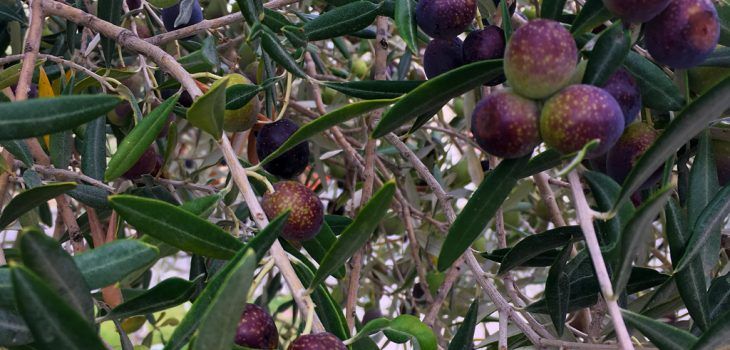
312/377: Pompu
INSPIRATION

A short journey through the Marmilla hills takes me from Masullas to Pompu, nestled in a small valley. As soon as I arrive, Mayor Moreno welcomes me with his wife Vanessa. I already know Moreno because he is Salvatore’s brother, my dear friend and fellow bass player.
After settling in the Social Aggregation Center where I will stay overnight, we head to the Casa del Pane, a beautiful old manor house that has become the Multimedia Bread Museum. Here I can watch a series of videos on the production of bread, in some well-equipped environments with various tools and materials, including different types of wheat. Today is Sunday and outside the museum, in a loggia overlooking the large courtyard, bread is being prepared.
While the women are kneading and the children are playing around, it is Moreno himself who bakes the bread in the wood-burning oven, kept clean by mastic brushes. I watch the fire with curiosity. The bread is baking. When ready it is promptly taken out and set aside to be eaten later.

While I’m wearing the “Pompu & Friends” t-shirt produced by the Pro Loco and given to me by Ida, I struggle with a pain in my arm that has been affecting me for some time now (PS only at the end of the trip will I be diagnosed with acute epicondylitis, the tennis player elbow, which to date, more than a year later, is still not completely healed). Mariangela is immediately consulted, a woman who massages my back and arm, relieving the muscle tension a little.
Then I am taken over by Anna Maria Ardu and Lorenzo who take me around the village. Anna Maria is the author of the book “In Pompu” which collects historical photographs of the country. This is a series of books by female authors from the Documenta publisher that I have already found in other villages.

Walking along the main street I notice photographic panels hanging on the stone walls of some houses, as I saw in Mogoro a few days ago. In fact, these are the works of the BiFoto Festival, created in Mogoro by Stefano Pia, which has also been extended to neighbouring villages.
We arrive at the parish church of San Sebastiano, a modern building, which preserves the eighteenth-century statues of the patron saint. The statue of the Madonna di Monserrato is also kept here, originally in the nearby church of Santa Maria and around which the first nucleus of the village was born.

On the side of the entrance to the ancient sanctuary there are still symbols, footprints of pilgrims. This place was in fact a pilgrimage destination and the first inhabitants who settled there and every year renewed their faith in the Madonna with the procession (pomp in Latin) were called Pompesi. Next to the church is the oratory, where Radio Pompu was born, from whose ashes later Radio Alta Marmilla was born in Ales, later becoming Radio Marmilla Popolare.
We continue the walk towards Piazza San Sebastiano, where once there was a small church that disappeared in the mid-eighteenth century. We pass the house of Captain Nicolò Leo, one of the six Pompesi soldiers who fell in the First World War.

For lunch we stop at the home of Moreno’s family, whom I have known for some time. Mrs Pina is, among other things, a skilled weaver, and she shows me a series of beautiful tapestries produced in her workshop next to her house.
In the afternoon we take the car to reach the Nuraghe Santu Miali. The site has yet to be excavated, but the importance of the structure is already evident from the little that is glimpsed, a central tower surrounded by a courtyard enclosed in a quadrilobed enclosure of large boulders of very yellow stone.

In the evening, a large part of the population awaits me in the courtyard of the Casa del Pane for an exhibition accompanied by stories of my journey. At the end of this we go to the Social Aggregation Center for a dinner organised by the Pro Loco. The main dish is the tallutzas pasta, a sort of coin that I saw prepared by hand during the morning at the Casa del Pane.

And, in the corridors of the center, some panels indicate in detail all the genealogies of the village. In a wall I see also hanging the calendar produced by the Pro Loco, on which all the birthdays of just under three hundred inhabitants of the most “remote” village of Sardinia are indicated.
SOUND FRAGMENTS
Srabadoi

SARDINIAN SHORT STORIES

Who knows why Pompu was chosen to indicate a very distant place in the saying “a casin’e Pompu” (impossible to translate in English but something like “as far as Pompu”.) This way of saying, to tell the truth not so much loved by the inhabitants, is so deeply rooted in informal conversation (especially in Campidanese) that there is a part of Sardinians who do not even suspect Pompu’s existence and who are amazed when they discover that a place in Sardinia called Pompu really exists.
Timidly, I ask the origin of this saying, and they reply that once upon a time, when the diocese of Usellus existed, Pompu was the most distant place from the center of the diocese and for this reason “I am sending you to Pompu” meant being sent to the remotest place in the diocese. How this then expanded to be a real way of saying is not very clear.
I remember my friend Salvatore telling me how many people from Cagliari went to take their picture at the Pompu entrance sign to show their friends the existence of this almost “mythological” place, while the Pompesi boys, having moved away from the nearby bar, hid among the bushes to welcome the ignorance of the “casteddai” with a throw of eggs in their heads!